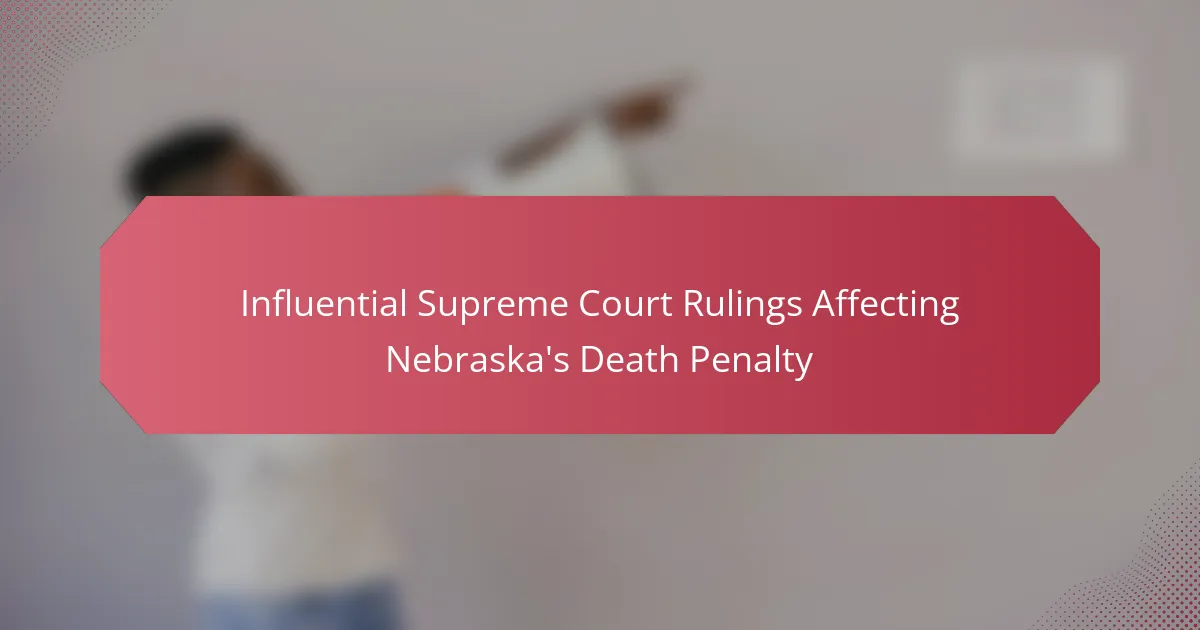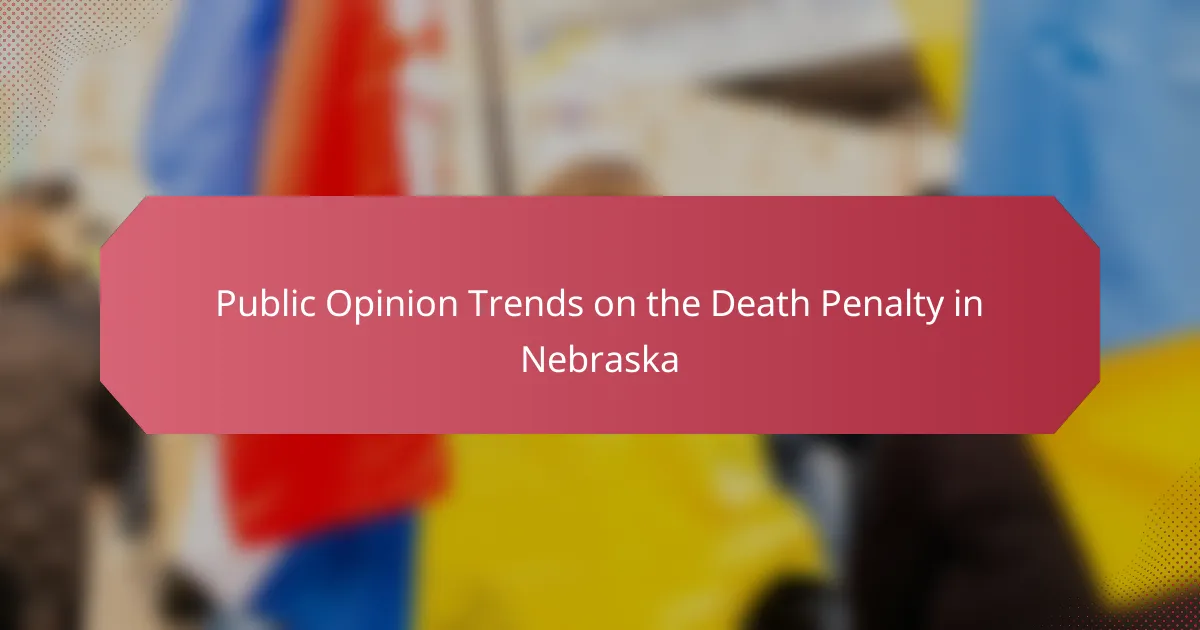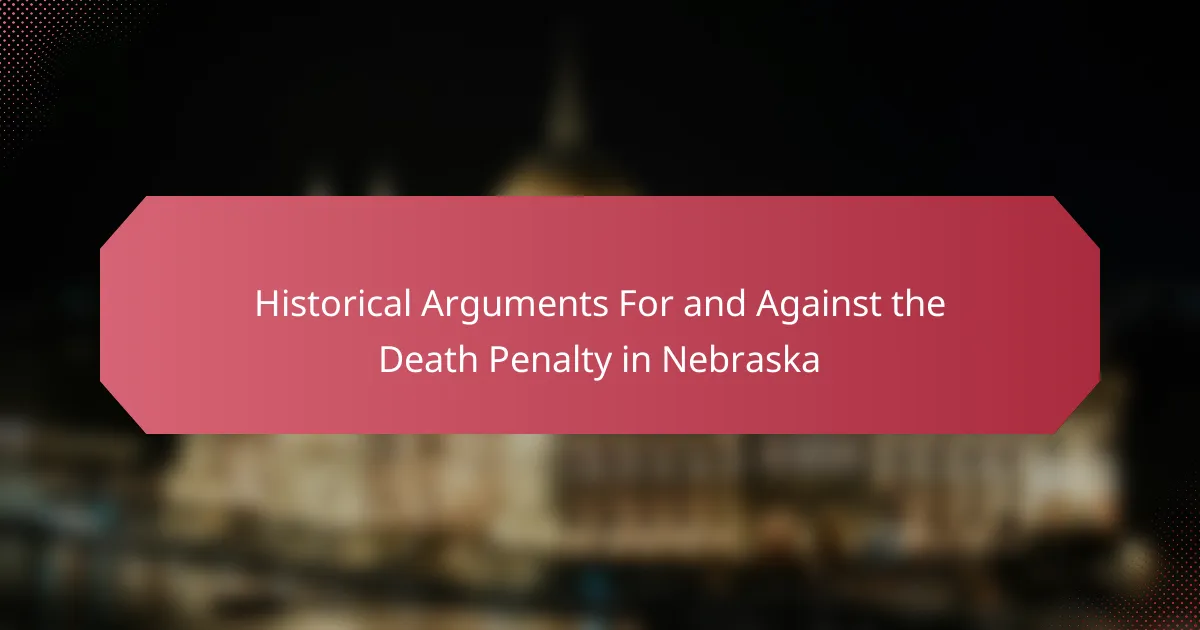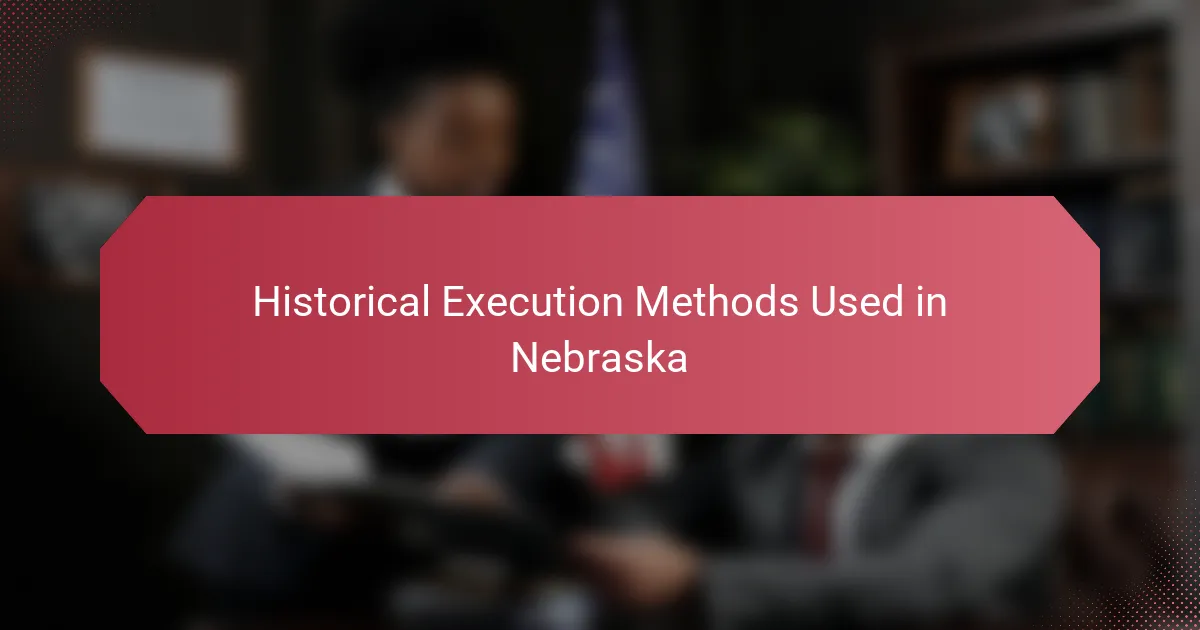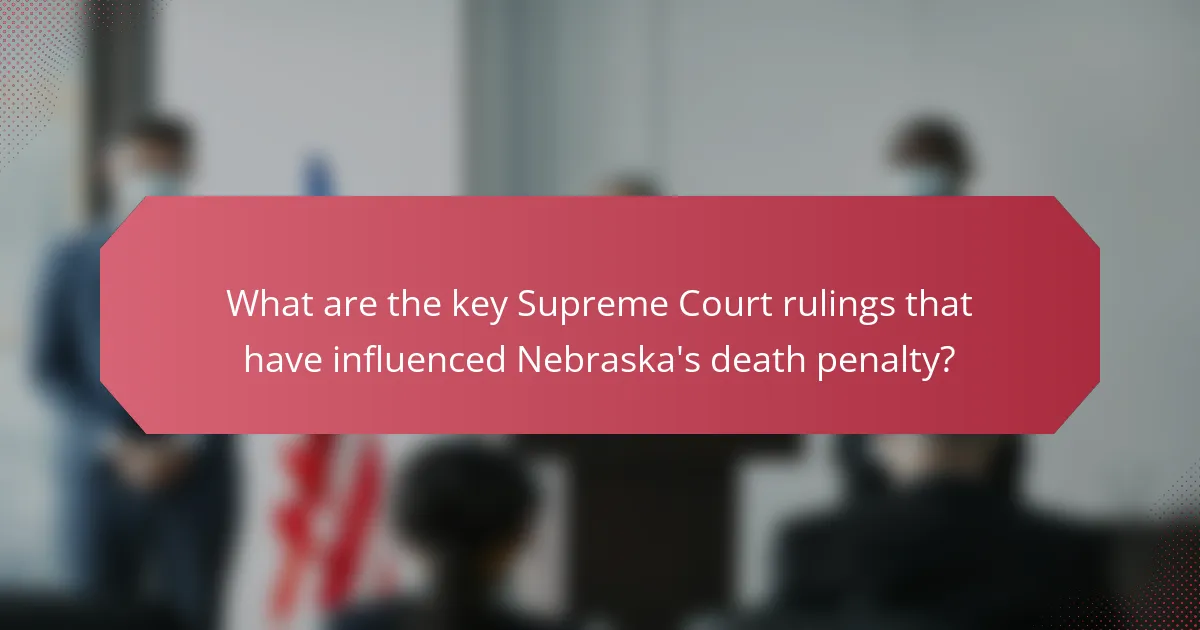
What are the key Supreme Court rulings that have influenced Nebraska’s death penalty?
The key Supreme Court rulings that have influenced Nebraska’s death penalty include Furman v. Georgia (1972) and Woodson v. North Carolina (1976). Furman v. Georgia declared that the death penalty, as administered, was unconstitutional due to its arbitrary nature. This ruling led to a temporary halt of capital punishment across the United States, including Nebraska. Woodson v. North Carolina established that mandatory death sentences were unconstitutional. This ruling required states to allow for individual consideration in death penalty cases. Additionally, Roper v. Simmons (2005) prohibited the execution of individuals who were minors at the time of their crimes. This decision further shaped the application of the death penalty in Nebraska. These rulings collectively impacted the legal framework governing capital punishment in the state.
How did these rulings shape the legal landscape of the death penalty in Nebraska?
Recent rulings have significantly influenced the legal landscape of the death penalty in Nebraska. The Nebraska Supreme Court’s decisions have clarified the constitutionality of execution methods. These rulings have also addressed the legality of the state’s death penalty protocol. For instance, the court ruled on the use of lethal injection drugs, impacting their availability. Additionally, the rulings have led to increased scrutiny of the death penalty process. This scrutiny has resulted in legislative changes aimed at reforming capital punishment. Overall, these rulings have shaped public perception and legal practices surrounding the death penalty in Nebraska.
What specific cases are considered landmark decisions in this context?
The landmark decisions affecting Nebraska’s death penalty include several key cases. One significant case is “Furman v. Georgia” (1972). This ruling declared the death penalty unconstitutional as applied, leading to a temporary halt in executions nationwide. Another important case is “Gregg v. Georgia” (1976). It reinstated the death penalty under certain guidelines, affirming its constitutionality when applied fairly. Additionally, “Atkins v. Virginia” (2002) prohibited executing individuals with intellectual disabilities. These cases collectively shaped the legal landscape of the death penalty in Nebraska and across the United States.
How have these cases impacted the application of the death penalty in Nebraska?
The cases have significantly impacted the application of the death penalty in Nebraska. Supreme Court rulings have led to changes in state law and procedures regarding capital punishment. For instance, the 2008 case of State v. Mata resulted in the Nebraska Supreme Court declaring that the death penalty must be applied fairly and consistently. This ruling necessitated a review of existing cases and sentencing practices. Additionally, the 2015 U.S. Supreme Court decision in Glossip v. Gross affected Nebraska’s use of lethal injection protocols. As a result, Nebraska faced challenges in obtaining execution drugs, leading to a moratorium on executions. These legal precedents have shaped the landscape of capital punishment in the state, influencing both public opinion and legislative action.
What constitutional issues have been raised in these Supreme Court rulings?
Constitutional issues raised in Supreme Court rulings regarding Nebraska’s death penalty include Eighth Amendment concerns. These concerns focus on the prohibition of cruel and unusual punishment. The Court has examined the methods of execution used in Nebraska. Decisions have questioned whether these methods meet constitutional standards. Additionally, issues of due process under the Fourteenth Amendment have been raised. These issues involve fairness in sentencing and appeals processes. The rulings also address racial disparities in death penalty cases. Such disparities suggest potential violations of equal protection under the law. Overall, these constitutional issues shape the ongoing debate around the death penalty in Nebraska.
How do these rulings address the Eighth Amendment’s prohibition against cruel and unusual punishment?
These rulings interpret the Eighth Amendment’s prohibition against cruel and unusual punishment by establishing standards for humane treatment in capital cases. They assess whether certain methods of execution are excessively painful or degrading. For instance, the Supreme Court ruled in Baze v. Rees (2008) that a three-drug protocol did not constitute cruel and unusual punishment. The Court emphasized that states must avoid methods that pose a substantial risk of severe pain. Additionally, in Glossip v. Gross (2015), the Court upheld the use of a particular drug in executions, stating it did not violate the Eighth Amendment. These cases demonstrate the ongoing evaluation of execution practices to ensure compliance with constitutional protections against inhumane treatment.
What role does the Fourteenth Amendment play in these decisions?
The Fourteenth Amendment plays a crucial role in shaping rulings related to Nebraska’s death penalty. It ensures due process and equal protection under the law. Supreme Court decisions often reference the amendment when addressing issues of fairness in capital punishment. For example, cases like Furman v. Georgia highlighted concerns about arbitrary sentencing. The amendment’s principles help to evaluate whether death penalty practices are discriminatory. Additionally, it influences legal standards for mental competency and sentencing procedures. Overall, the Fourteenth Amendment serves as a foundation for challenging and reforming death penalty laws.
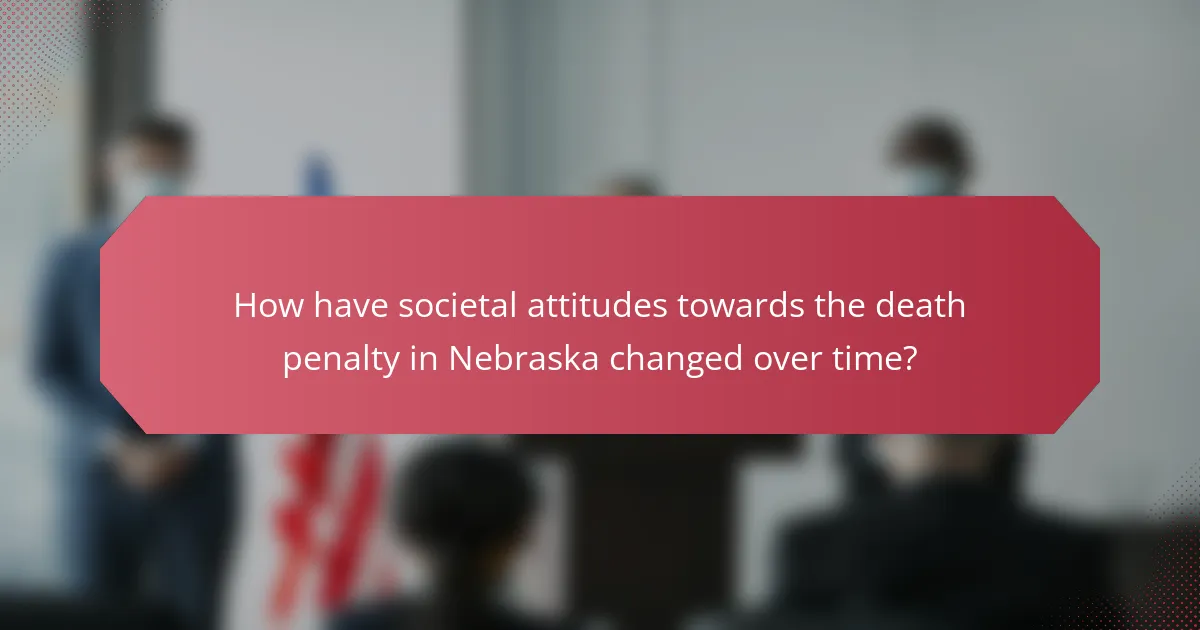
How have societal attitudes towards the death penalty in Nebraska changed over time?
Societal attitudes towards the death penalty in Nebraska have shifted significantly over time. In the early 20th century, public support for capital punishment was high, reflecting a belief in its deterrent effect. However, by the late 20th century, opposition began to grow due to concerns about wrongful convictions and racial disparities. A notable turning point occurred in 2015 when Nebraska’s legislature voted to abolish the death penalty, reflecting changing societal values. This decision was influenced by a broader national trend towards abolition and a growing emphasis on rehabilitation over retribution. Public opinion polls indicated a decline in support for the death penalty, with many Nebraskans favoring life sentences instead. In 2016, the repeal was overturned by a referendum, showcasing a complex and evolving relationship with capital punishment in the state. Overall, Nebraska’s societal attitudes have transitioned from strong support to a more divided stance, influenced by ethical considerations and national trends.
What factors have contributed to shifts in public opinion regarding capital punishment?
Shifts in public opinion regarding capital punishment have been influenced by several key factors. Increased awareness of wrongful convictions has raised concerns about the reliability of the justice system. High-profile cases of exoneration have highlighted the potential for irreversible mistakes. Additionally, changing societal values have led to a growing emphasis on rehabilitation over retribution. The impact of media coverage on crime and punishment has also played a significant role in shaping perceptions. Furthermore, research indicating that capital punishment does not effectively deter crime has contributed to skepticism. Lastly, the moral and ethical debates surrounding the death penalty have prompted many to reconsider its use.
How have media portrayals influenced perceptions of the death penalty?
Media portrayals have significantly influenced perceptions of the death penalty. Television shows, films, and news coverage often depict the death penalty in dramatic and emotional contexts. These portrayals can shape public opinion by highlighting the moral dilemmas surrounding capital punishment. For instance, sensationalized coverage of high-profile cases can evoke strong emotional responses. Research indicates that such portrayals can lead to increased support for the death penalty among viewers. A study published in the Journal of Criminal Justice found that exposure to media representations correlates with more favorable attitudes toward capital punishment. This influence can also result in a desensitization to the violence associated with executions. Overall, media representations play a crucial role in framing the public discourse on the death penalty.
What role do advocacy groups play in shaping public attitudes?
Advocacy groups play a significant role in shaping public attitudes by raising awareness and influencing perceptions. They mobilize communities around specific issues, such as the death penalty. Through campaigns, they disseminate information and highlight personal stories. This creates emotional connections and fosters public discourse. Research indicates that advocacy efforts can shift public opinion over time. For instance, studies show that consistent messaging can lead to increased support for or against policies. Advocacy groups also engage in lobbying efforts to influence lawmakers. Their activities can result in changes in legislation and public policy. Overall, they are crucial in driving societal change and shaping public attitudes on contentious issues like the death penalty.
How do recent Supreme Court rulings reflect changing societal values?
Recent Supreme Court rulings reflect changing societal values by addressing contemporary issues such as racial bias and the evolving standards of decency. These rulings often align with public sentiment and progressive movements advocating for justice reform. For instance, the Court’s decision in *Bucklew v. Precythe* highlighted concerns about the death penalty’s application and its potential for cruel and unusual punishment. Additionally, rulings on cases related to voting rights and affirmative action demonstrate a shift towards inclusivity and equality. As societal values evolve, the Supreme Court adapts its interpretations to reflect these changes, indicating a responsive judicial system.
What evidence suggests a trend towards opposition to the death penalty?
Public opinion polls indicate increasing opposition to the death penalty. A 2021 Gallup poll showed that only 55% of Americans support capital punishment, down from 80% in 1994. Additionally, several states have abolished the death penalty in recent years. For instance, Virginia ended its death penalty in 2021, marking a significant shift. Furthermore, wrongful convictions have raised concerns about its fairness. The Innocence Project reports that 20 individuals on death row were exonerated since 1973. These factors collectively illustrate a growing trend against the death penalty.
How have these societal changes influenced legislative actions in Nebraska?
Societal changes in Nebraska have prompted significant legislative actions regarding the death penalty. For instance, growing public opposition to capital punishment has led lawmakers to reconsider its application. In 2015, the Nebraska Legislature passed a bill to abolish the death penalty, reflecting changing societal attitudes. This legislative shift was influenced by national trends and increasing awareness of wrongful convictions. Additionally, the Supreme Court’s rulings on the constitutionality of certain death penalty practices have shaped legislative responses. The combination of public sentiment and judicial guidance has created a dynamic environment for death penalty legislation in Nebraska.
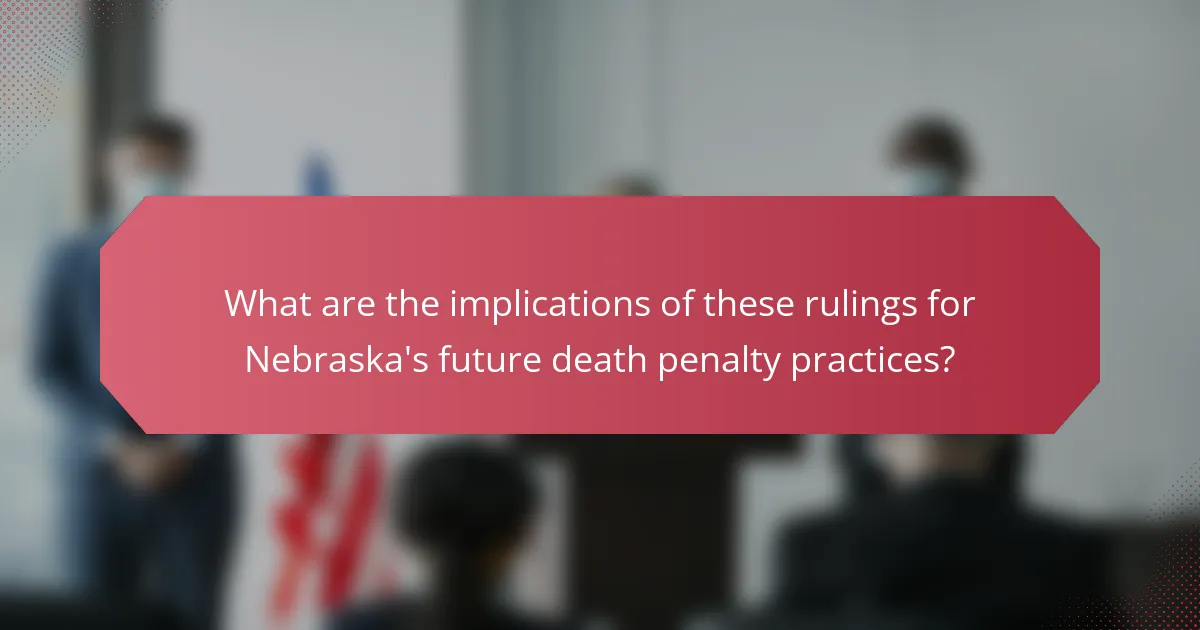
What are the implications of these rulings for Nebraska’s future death penalty practices?
The implications of these rulings for Nebraska’s future death penalty practices include potential changes in execution methods and legal challenges. The rulings may lead to increased scrutiny of the drugs used for lethal injections. Nebraska could face more litigation regarding the constitutionality of its death penalty procedures. Additionally, the state may need to revise its death penalty statutes to comply with judicial findings. Historical data shows that similar rulings in other states have resulted in moratoriums on executions. Furthermore, public opinion may shift, influencing legislative actions regarding capital punishment. These factors collectively indicate a transformative period for Nebraska’s death penalty framework.
What challenges do current death penalty practices face in light of recent rulings?
Current death penalty practices face significant challenges due to recent Supreme Court rulings. These rulings have raised constitutional questions about the methods of execution. Concerns about cruel and unusual punishment have emerged. Legal challenges to lethal injection protocols have increased. Some states struggle to obtain the necessary drugs for executions. Additionally, there is growing public opposition to the death penalty. This opposition influences legislative actions and reforms. As a result, some states have enacted moratoriums on executions. These factors collectively complicate the administration of the death penalty in Nebraska and beyond.
How might future Supreme Court decisions further impact Nebraska’s death penalty?
Future Supreme Court decisions may significantly shape Nebraska’s death penalty policies. Changes in legal interpretations regarding the Eighth Amendment could redefine what constitutes cruel and unusual punishment. Recent precedents suggest a potential shift towards more stringent scrutiny of execution methods. This could lead to challenges against Nebraska’s current lethal injection protocols. Additionally, rulings on racial bias in sentencing could prompt reevaluations of death penalty cases in Nebraska. The Court’s stance on mental competency may also influence the execution of individuals with intellectual disabilities. These factors collectively indicate that upcoming decisions could either reinforce or dismantle the state’s death penalty framework.
What best practices should Nebraska consider in light of influential Supreme Court rulings?
Nebraska should adopt best practices that prioritize fairness and transparency in its death penalty processes. This includes conducting regular reviews of death penalty cases to ensure compliance with Supreme Court rulings. Nebraska must also implement comprehensive training for legal professionals on constitutional standards established by the Court. Additionally, the state should enhance public awareness campaigns about the death penalty’s implications and legal standards. These practices align with the Supreme Court’s emphasis on due process and the prohibition of cruel and unusual punishment. Historical cases, such as Furman v. Georgia, highlight the need for states to adhere to evolving legal standards in capital punishment.
How can Nebraska ensure compliance with constitutional standards in capital cases?
Nebraska can ensure compliance with constitutional standards in capital cases by implementing rigorous legal frameworks and procedures. This includes adhering to the U.S. Supreme Court’s rulings on due process and fair trial rights. Nebraska must ensure adequate representation for defendants in capital cases. This can be achieved by providing funding for qualified defense attorneys. Training for judges and jurors on constitutional standards is also essential. Regular reviews of capital case procedures can help identify areas for improvement. Furthermore, Nebraska should establish clear guidelines for the application of the death penalty. This includes transparency in sentencing and appeals processes. Overall, these measures align with the constitutional requirements established by influential Supreme Court rulings.
What reforms could improve the fairness and efficacy of the death penalty system in Nebraska?
Reforms to improve the fairness and efficacy of the death penalty system in Nebraska include implementing stricter guidelines for evidence admissibility. This ensures that only reliable evidence is used in capital cases. Additionally, enhancing training for jurors on the complexities of death penalty cases can lead to more informed decisions. Establishing a statewide public defender system for capital cases can help ensure adequate legal representation. Furthermore, introducing a moratorium on the death penalty could allow for a comprehensive review of its application. According to a 2017 report by the Nebraska Commission on Public Advocacy, disparities in sentencing highlight the need for these reforms. Implementing these changes may lead to a more equitable system.
The main entity of the article is the Supreme Court rulings that have influenced Nebraska’s death penalty. Key rulings such as Furman v. Georgia and Woodson v. North Carolina have shaped the legal framework surrounding capital punishment, addressing issues of constitutionality and fairness. The article explores the impact of these decisions on Nebraska’s death penalty practices, including challenges related to execution methods, public opinion shifts, and legislative actions. It also examines the role of societal attitudes, advocacy groups, and media portrayals in shaping perceptions of the death penalty, alongside potential reforms to enhance fairness and compliance with constitutional standards.
